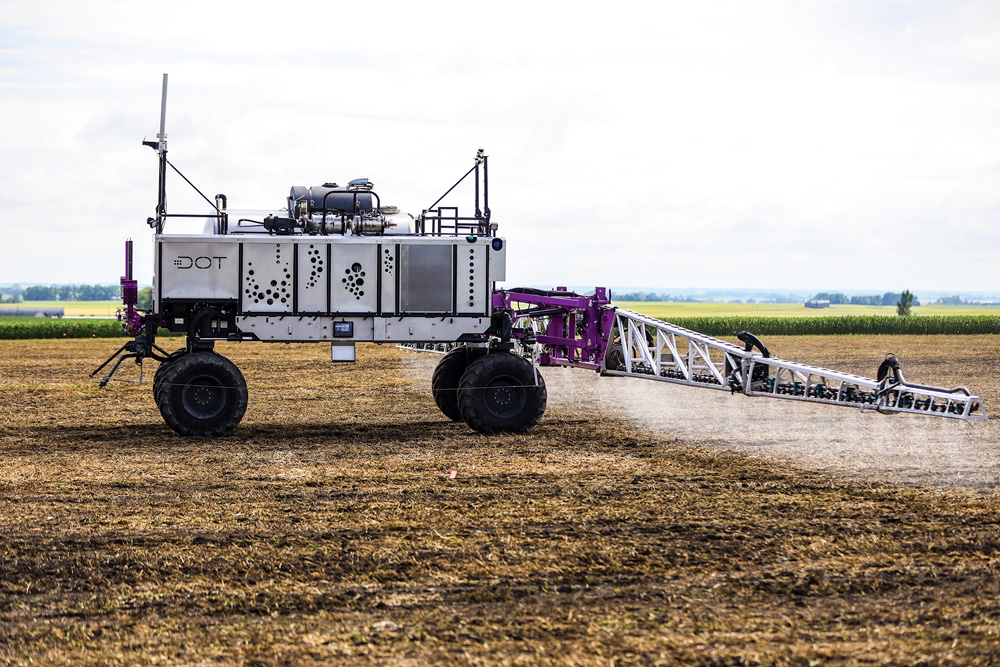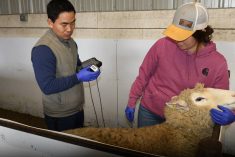The pandemic has revealed critical weaknesses in the country’s agriculture and food systems — and the need to invest in their future, say experts.
“It’s continuing to show the importance of technology, and adopting technology, on the farm,” said Remi Schmaltz, CEO and co-founder of Decisive Farming, an Alberta digital ag and farm management company.
“We need to continue to take a very proactive stance on how we’re adopting and supporting technology in the market. These aren’t nice-to-haves — these are table stakes to a successful industry.”
Read Also

Farming Smarter receives financial boost from Alberta government for potato research
Farming Smarter near Lethbridge got a boost to its research equipment, thanks to the Alberta government’s increase in funding for research associations.
Investment in smart ag technology that allows farmers to produce more with less land, labour, and inputs has ramped up over the past five years, but much more is needed, said Schmaltz.
“There’s a real focus around food supply chains,” he said. “There’s a lot of discussion occurring due to COVID-19 around that, and the ability to track food production and provide transparency of the supply chain is going to become more important than ever before.”
But the pandemic has also highlighted the need to diversify Alberta’s economy, he added.
“There’s a huge opportunity here for agriculture to play a fundamental role in diversifying our economy. I really think it’s the low-hanging fruit in the province.”
An ongoing labour shortage is another issue that’s been highlighted by the pandemic, said Joy Agnew, associate vice-president of applied research at Olds College.
“A lot of technology development is about dealing with labour shortages, and labour availability for farming is a hugely uncertain thing right now,” said Agnew.
Olds College has recently acquired the self-driving DOT Power Platform, which can be equipped with implements such as a seeder or sprayer.
That type of equipment has obvious labour-saving advantages as does robotics in food-processing plants, said Cornelia Kreplin, executive director of smart agriculture and food innovation at Alberta Innovates.
Both technologies require the capture and processing of lots of data, and the pandemic has shown that’s equally true in ag and food supply chains, she said.

“There’s an increasing awareness of the importance of technology. It’s vital to control disease outbreaks, especially in pandemics, and agriculture has learned this along the way,” said Kreplin. “The better our data systems are, the more quickly we can put appropriate measures in place.”
Investing for the future
But funding for new technology is hard to come by — that was true before the pandemic and is only worse now, said Schmaltz.
“The ‘death valley’ of ag tech in Canada is really financing,” said Schmaltz. “Access to capital right now is probably worse than it was previously. Investors aren’t ramping up in general — they’re focused on supporting their existing portfolios.”
And Alberta lags other provinces on that score.
“If we look at technology in general — not just specifically in agriculture — I’d say Alberta is behind,” said Schmaltz. “I don’t even mean government funding-wise — just as a whole. If we talk venture investments or angel investments or government investments in technology, Alberta is behind a lot of other provinces in Canada. We absolutely need to up our game.”
However, he predicted, many “good tech companies” will likely go under because they won’t be able to find the capital needed to keep operating.
Farmers, too, will be reluctant to spend money on smart ag technology, said Agnew.
“If there is an economic need and a farmer is going to make money by adopting a new technology, then yes, there’s going to be a lot of innovation and a lot of technology adoption,” she said.
“But with the uncertainty in the economy and in markets, I don’t know for sure what it’s going to look like after this.”
Even those who can afford it will likely hold off awhile, said Kreplin, adding Alberta Innovates is working to develop a network of smart farms across the province to trial emerging technologies.
“Industry adoption depends on the perception of the return on investment,” she said.
“Agribusinesses might see the benefit and have the resources to adopt these new technologies, but these early adopters need to see the return on investment. It isn’t easy to change from traditional production to trusting this new world of big data or automation.”
Staying competitive
But waiting comes with a cost, too.
“Without the constant development and adoption of new technologies, we’ll see Canada become less competitive in the global marketplace,” said Kreplin.
Schmaltz agrees.
“If we see a lack of tech companies and new technology coming, that’s going to affect our ability to be competitive globally in agriculture,” he said.
Governments should look to ag as they seek to rebuild the economy, said Schmaltz.
“Certainly, the government plays a role in that to help foster some of these things. We’ll see what role it plays, but for sure, it needs to be more active.”
Government and the private sector should partner in this effort, said Kreplin.
“In my perfect world, all sorts of funding would rain down on agriculture, but if we have joint investment from the private sector and government, we’ll see a better outcome at the end of the day,” she said.
The can-do spirit that has been demonstrated during the pandemic needs to be harnessed to seize on opportunities such as investment in ag technology, said Agnew.
“Six weeks ago, if you had told me that we would shift an entire college to online learning and have 80 per cent of the workforce working from home, I would have said you were nuts,” she said in an interview last month.
“But that type of thing has been achieved over and over and over again around the world.
“If we’ve learned one thing from the pandemic, it’s that when everyone turns themselves toward a common goal, we can achieve almost anything.”















